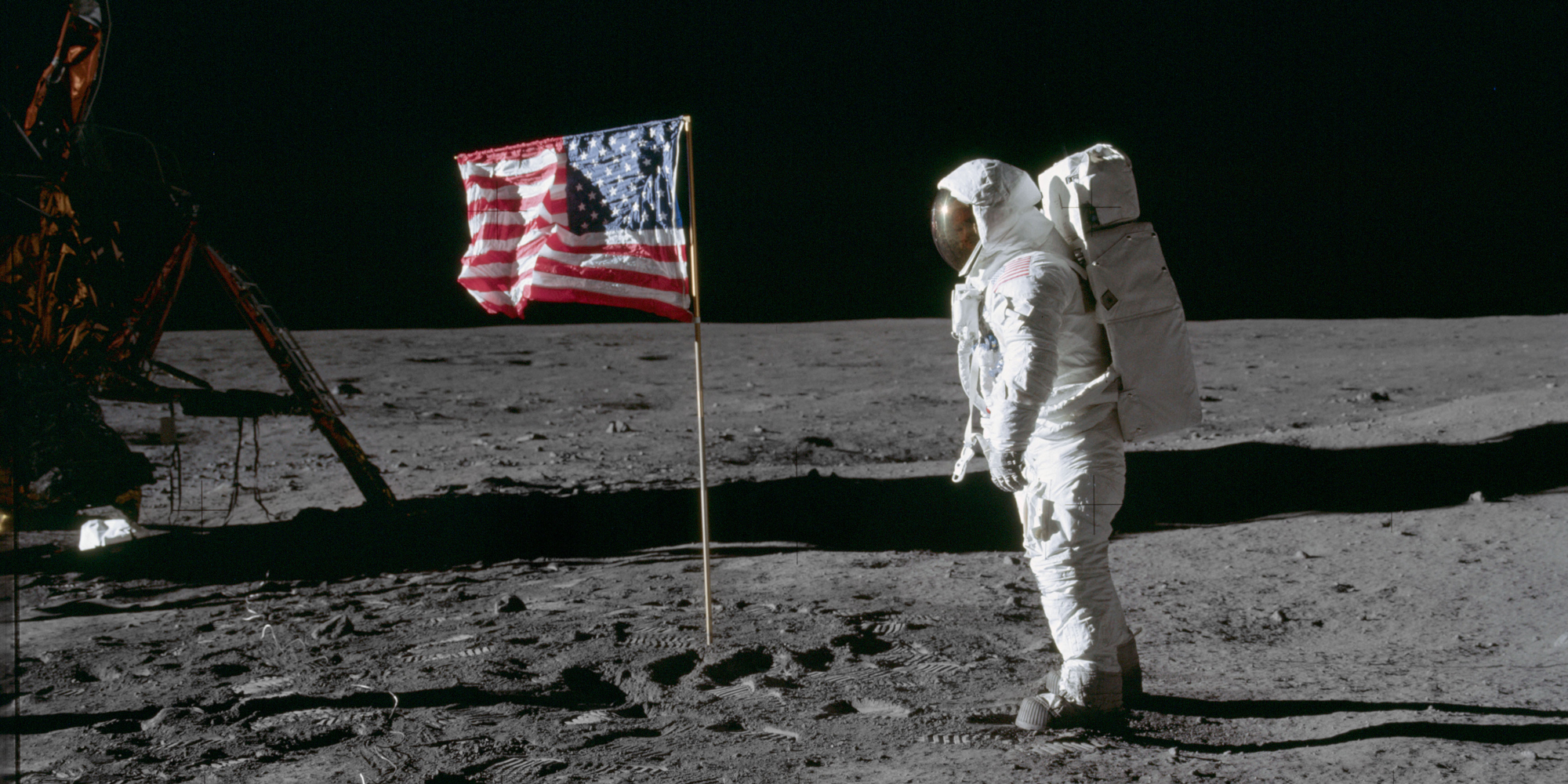
Original videotapes of the moon landing have sold at auction for $1.8 million. Sotheby’s describes the tapes as “the earliest, sharpest, and most accurate surviving video images of man’s first steps on the moon,” and is offering them in original, unadulterated form — “unrestored, unenhanced and unremastered.”
The original footage of the moon landing was recorded by two cameras — a Hasselblad and a specially adapted Westinghouse television camera that was mounted to the hatch of the Lunar Module to capture Armstrong’s first steps on the moon. The Westinghouse camera was detechable and was later placed on a tripod on the surface to record the activities of the astronauts as well. The footage from this camera was transmitted to the Parkes Observatory in Australia, from where it was sent along to NASA’s Houston base and, finally, to televisions around the world.
When NASA was preparing for the celebration of the 40th anniversary of the moon landing, it searched for the original tapes from the Westinghouse. But sadly, the tapes had already been recorded over with other projects, a phenomenon that will be familiar to anyone who grew up during the VHS era. There was one remaining set of tapes of the event though, in the form of Ampex tapes that had been used when Houston received the broadcast signal from Australia.
What happened to those surviving tapes is a saga in itself. They come from the collection of Gary George, who worked as an intern at the NASA Johnson Space Center during the summer of 1973. While he was there, he went to a government surplus auction and bought a lot contain 1,150 reels of magnetic tape from NASA projects for a total of $217.77. George was planning to take the resuable tapes and sell them on to TV stations, figuring he’d make a little extra cash.
Fortunately for all of us, George’s father looked closely at the boxes of tapes and noticed some of them were labeled “APOLLO 11 EVA | July 20, 1969 REEL 1 [–3].” George has been holding on to the tapes ever since.
#AuctionUpdate Unrestored, unenhanced, and unremastered, the videotapes represent the earliest, sharpest, and most accurate surviving video images of man’s first steps on the moon #Apollo50th pic.twitter.com/f2ulCpIHqz
— Sotheby's (@Sothebys) July 20, 2019
A clip of the video that shows the astronauts moving around the surface of the moon is included in this tweet from Sotheby’s. It’s amazing to see the astronauts bounce in the low gravity and hear them communicating. So even if you can’t afford a spare few million to get your hands on the original tapes, you can still see some of the wonders of the Apollo mission.



